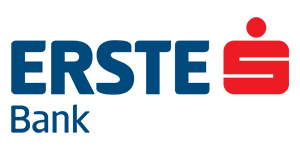- เรื่องราวความสำเร็จของลูกค้า
- Erste Bank

Austrian bank uses integrated risk and carbon calculation engine to steer toward net-zero by 2050

Decarbonize lending portfolios and address compliance and disclosure requirements

Calculate both RWA and financed emissions
in a single, transparent and reconcilable platform
Erste Bank achieved this using • SAS® Solution for Regulatory Capital
Erste Group extends its SAS Solution for Regulatory Capital to help understand and reduce impact of climate change on its portfolios
With roots dating back to 1819, Erste Group Bank has evolved from Austria’s first savings bank into a financial powerhouse across Central and Eastern Europe, boasting more than 2,000 branches. However, its journey doesn’t stop at mere expansion; it’s a story of commitment to a mission that transcends borders and now extends to combatting climate change. Since its founding, the Erste mission has been to “create prosperity for everyone, whatever their nationality, creed, gender or age.” Now, Erste is continuing to act on this mission by committing to positive climate change reform across its operations.
In alignment with the United Nations Net Zero Banking Alliance, the bank has committed to achieving net-zero emissions in its operations and portfolios by the year 2050. Several strategic targets have been set to achieve this, but one of the primary changes Erste plans to make is decarbonizing its lending and investment portfolio.
Decarbonizing the lending and investment portfolio
Decarbonization of lending and investment portfolios has become increasingly important for financial institutions as the world moves toward a low-carbon economy. The process involves both reducing lending to high-polluting businesses and increasing lending opportunities to eco-friendly and sustainable businesses.
However, it’s not just about making eco-friendly investments. Financial firms also must follow strict rules and guidelines related to environmental and social responsibility, like Environmental Social Governance (ESG) and sustainability standards. These rules come from various sources like European Banking Authority Pillar 3 ESG Disclosures, International Financial Reporting Standards (IFRS) Sustainability Disclosures, the European Union Corporate Sustainability Reporting Directive, Sustainable Finance Disclosure Regulation and more.
To meet all these requirements, financial firms need to calculate and predict how much of their investments contribute to carbon emissions. They use well-established methods like the Partnership for Carbon Accounting Financials (PCAF) Global Greenhouse Gas Accounting and Reporting standard, which helps them track and report on the carbon emissions associated with its investments.
To reduce future financed emissions a bank must first calculate its current financed emissions. Understanding the current state allows a bank to report on its decarbonization progress toward the alignment of its portfolio with the 2050 net-zero emissions goals of Paris Agreement.
The financed emission calculation (also known as carbon accounting) is not only complex and data heavy, but also requires robustness and transparency to satisfy external auditors. The carbon accounting calculations must clearly validate the reported results, while also being flexible enough to allow for intuitive what-if simulations and scenario analysis.
We had to develop a Portfolio Carbon Footprint Calculation, and our best choice was to implement it into our SAS risk weighted assets (RWA) calculation platform. This gives us many benefits of data consistency, auditability, and regulatory compliance. The required data input and calculation complexity is very similar to the RWA calculations, and the SAS solution provides us a robust and high-performance risk calculation and simulation platform. Gabriel Marosi ESG Advisor to the Board Erste Group
Using SAS technologies to meet new goals
For years, Erste Group has successfully used SAS risk weighted assets (RWA) calculation and simulation engine within SAS Solution for Regulatory Capital for calculation of Basel Risk-Weighted Assets and Capital Requirements, which are a set of international banking regulations. The flexible solution is designed to be easily adaptable to shifting regulations, and to process large volumes of sensitive data securely. Furthermore, the solution has become a fundamental component for Erste’s portfolio credit risk simulations and what-if and scenario analysis, which has allowed for improved risk mitigation.
At the beginning of Erste’s decarbonization journey, it started building a financed emission calculator in Excel. Over time, however, the bank realized it needed a more robust and controlled environment to address all its requirements and decided to adapt the SAS RWA engine to meet its goals.
Gabriel Marosi, Environmental Solutions and Governance Advisor to the Board for the Erste Group, said, “We had to develop a Portfolio Carbon Footprint Calculation, and our best choice was to implement it into our SAS risk weighted assets (RWA) calculation platform. This gives us many benefits of data consistency, auditability, and regulatory compliance. The required data input and calculation complexity is very similar to the RWA calculations, and the SAS solution provides us a robust and high-performance risk calculation and simulation platform.”
In addition to the RWA engine calculations, the flexible SAS solution was extended to calculate portfolio financed emissions as specified by PCAF and to produce the required measures for reports, disclosures, decarbonization and portfolio management. The PCAF calculation methodology with data sourcing was implemented in standard SAS technology by a consulting partner and integrated into the SAS RWA engine by Erste’s internal SAS competence team to maximize efficiency and integration synergies.
Erste Bank– Facts & Figures
16 million+
clients
45,000+
employees
2,000+
branches
Strategic assessments and transparent communication
Now, Erste can calculate in one shared SAS engine both RWA and financed emissions portfolio measures across the group. The result? A single, transparent and governed platform.
Due to overlapping data needed for both calculations, there are major synergies and integration benefits achieved from performing the calculations jointly. Thus, the total costs of ownership are driven down substantially for both processes.
Now, Erste can perform a joint portfolio assessment of the impact various events and strategies can have on the two key portfolio performance indicators: financed emissions and RWAs. Simultaneously, Erste can analyze interdependencies, assess relevant portfolio concentrations of carbon and RWA intensity, and identify strategies going forward.
There are many alternative portfolio strategies that lead to net-zero financed emissions –each of them will have a different risk and return and carbon profile. With increasing calls for decarbonization and transition planning from regulators, customers and investors, this improved process positions Erste to strategically meet these new demands.
Already, Erste has used its transparent data to begin communicating with customers. Last year, the bank released its first public report detailing its decarbonization targets, strategies and progress. Moving forward, Erste intends to use its newfound analytical insight to continue to communicate transparently with customers and investors about its financed emissions and demonstrate progress toward net-zero operations.
